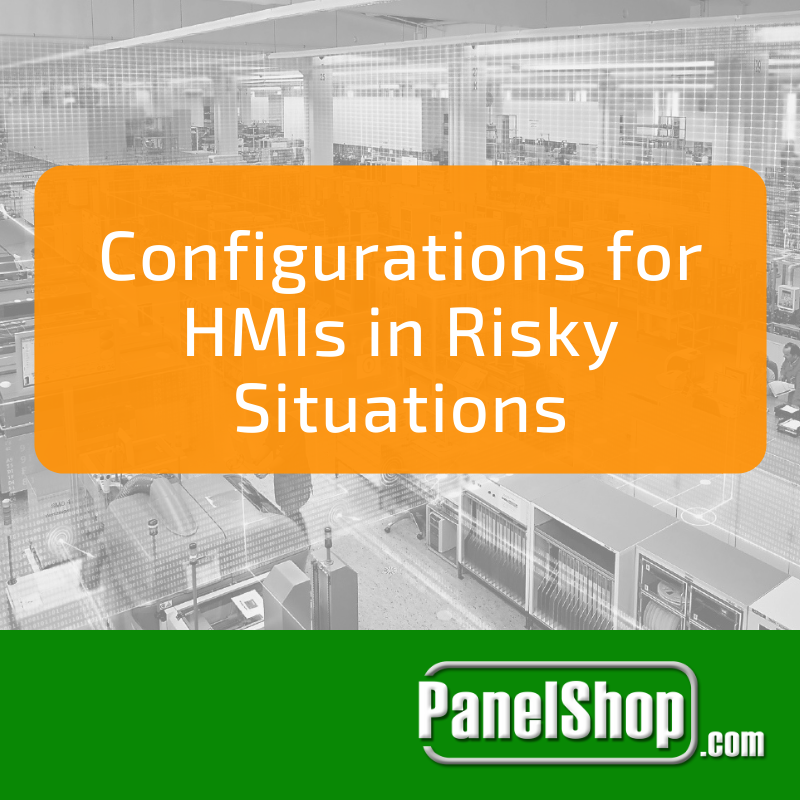.png?width=300&name=Copy%20of%20PanelShop.com%20Template%20(9).png) The steady advancement in sensory and control technology has allowed engineers to accumulate and display more information than necessary on human-machine-interfaces. For years, designers have used indicator lamps to alert operators and color-coded LEDs to indicate the status of vital assets.
The steady advancement in sensory and control technology has allowed engineers to accumulate and display more information than necessary on human-machine-interfaces. For years, designers have used indicator lamps to alert operators and color-coded LEDs to indicate the status of vital assets.
When it comes to day-to-day operations, operators seldom use all the information displayed on the HMI and mostly use 1–2 status screens to monitor major parameters. Also, usually the HMI is placed within a secure location or room, away from hazards, sparking minimal safety concerns. The scenario, however, changes if the HMI along with the array of supporting electrical equipment needs to be placed in a hazardous location.
The concept isn’t new and has been around for decades. HMI manufacturers have dealt with it by providing a hazard-proof version of their product, usually listed within their sales brochure or website. The problem arises when products from various manufacturers are involved such as HMI, controller, and communication devices. When devices have different manufacturers, the biggest problem faced is that of interoperability. If the devices support the OPC protocol, then an OPC server can be used to act as a universal translator.
Configuration #1
An HMI installation can follow a self-contained design that runs proprietary software, and whose functionality is bottlenecked by the features of the sensory and control devices. At times, these HMIs can be used to run customer-generated scripts that can take their functionality one step further. But as a whole, they are incapable of operating as a general-purpose computing device. Failure in operation is usually treated with replacement of the entire unit.
Configuration #2
Another way to configure the HMI is to connect it to a computer that runs HMI software, transforming the setup into what is known as “Panel PC”. The display and the computing device are connected to each other through cables in order to create the setup. The computing device is the primary component of such a setup as it hosts memory, hard drive, and communication ports. Operation failure can be rectified by replacing specific parts.
Configuration #3
This configuration also splits the display screen and the computer and combines the best features of Configuration #1 and #2. The computer can be put outside the hazardous area in a designated safe zone, while the HMI is connected through a KVM switch. The plethora of options available allows the computer and HMI to be separated over a long distance, thus ensuring availability and cost-effectiveness.
Emerging Technologies
Wireless communication is gaining popularity throughout the world, and several breakthroughs are being made to lift the constraints imposed by limited bandwidth. Products such as smartphones and tablets provide entirely new avenues of connectivity as well as safety. However, these devices do require an entirely new strategy when it comes to the development of the HMI software as they possess smaller screens and limited processing power compared to desktop computers.
Thus, before you settle on a specific manufacturer for the HMI, ensure that you’ve carried out ample research on the hazardous atmosphere. You should be aware of the risks and fluctuations linked with the installation location as well. Next, you should determine which configuration would suit the situation best, and as a rule of thumb, remember that any device rated for a hazardous area would be costlier. And some configurations are more expensive in specific circumstances. For instance, configuration #3 costs more in situations where HMI units with minimal specs are required. It is therefore essential to have background information about the application, atmosphere, and requirements before selecting your HMI manufacturer.




